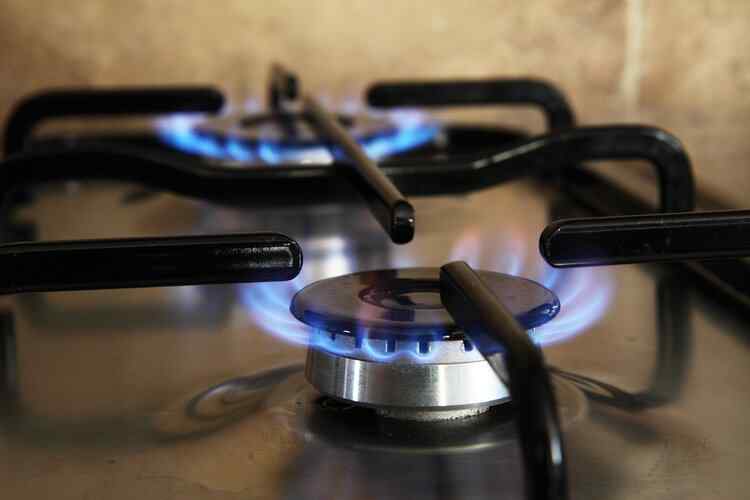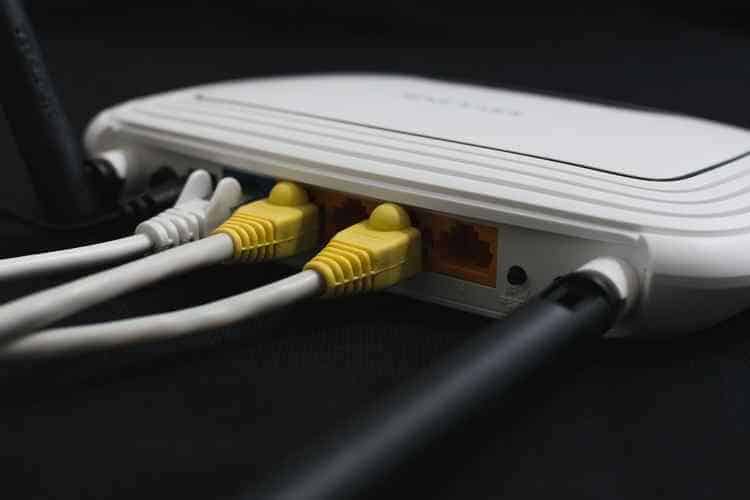
How to Save Money in Maryland (Part 1)
Regardless of what position you are in life right now, solidifying habits that reinforce conservative spending (not politics!) is extremely important in the long run.
Maryland, among other states, can be incredibly affordable if you look in the right places. This article serves to help Marylanders looking to curb spending and improve their financial position. Though many of the recommendations listed are Maryland-specific, you can apply these ideas anywhere.
The name of the game in saving money is, by definition, to save money. To avoid wasting your hard-earned salary or wages, the most important thing you can do to improve the longevity of your finances is to focus on how you spend money, not simply how much money you have to pay. To facilitate a more straightforward understanding here, I will focus on only one (yet arguably the most important) element of spending: recurring costs.
Recurring Costs
Recurring costs occur repeatedly, and it’s imperative to separate these from one-time costs in your budget. One-time costs should be a minor factor in your budget as they can be unanticipated (such as a car accident or spontaneous trip). Recurring costs are substantial, as they will determine how much money you can save over time.
One example of a recurring cost is a bus ticket to and from your workplace; you will repeat this cost each day you work, almost every day of each week. This cost includes groceries, utilities, and, most importantly, your rent or mortgage payments. If you plan to save money for your future, it’s critical to get these costs under control. Luckily, it is entirely possible with a bit of focus.
The first step is figuring out what costs in your spending qualify as recurring costs. I cannot tell you how often I have run into people who need to know how many recurring “lifestyle fees” (for lack of a better term) they have. It’s only possible to fix or improve your financial situation if you know what you’re spending!
Get a piece of paper, notebook, or whiteboard (if you know how to use Excel or Google Sheets, these are excellent options as well) and write down your recurring costs. I’ve organized them into a few different categories in this article, but there may be other categories I have missed. Add new types as necessary for your specific needs.
Housing

For most, the single most expensive monthly cost will be your rent or mortgage payments. Figuring out how to lower these is critical and will generally outweigh every other expense that you have. For example, did you know that you can negotiate your rent? I’m not going to discuss this here, but please feel free to read my article on rent negotiation here (coming soon) if you’re interested in learning more about it.
Negotiating rent is only one factor, though. Deciding where you live and what amenities you’re willing to take on or let go of are likely more significant factors regarding how much you will end up paying. More urban areas tend to be more expensive than less urban areas because there is more to do in the former regions than in the latter options, which have fewer local amenities.
We can also find this trend in the housing market. For example, Montgomery county homes typically sell for hundreds of thousands of dollars more than those in Talbot county. It is evident considering the geography; Talbot county is more rural and farther from Urban life in general, whereas Montgomery county is a comparatively short distance from Baltimore and Washington, DC.
Other factors that affect housing costs include the quality of the building or unit you live. Updated apartments and homes generally yield a higher price, as you might expect. A home with few upgrades, including a carpet of questionable cleanliness, walls that need painting desperately, and kitchen appliances built pre-2000, can reduce its market value by as much as 25%.
It all depends, though, on what you are trying to do. If it saves you a substantial amount of time to live close to where you work or go to school, it may be worth the premium. Be honest about whether this last statement is true; spending an extra 15 minutes driving, biking, or using public transit may be worth it if you save $150 – 200.
Be willing to make minor adjustments to your life and calculate them against how much you get from that higher price point. This post is specifically about saving money—not necessarily saving time—which is an entirely different matter.
Utilities
Often the second most expensive recurring cost you will have is utilities. By utilities, I am referring to electric, gas, and water. For questions about Maryland utilities, such as who I recommend and how to set them up, feel free to check out Maryland Moves’ resource page.
Electric

Electric bills will likely be the largest segment of your utility bill for all units (especially those that don’t utilize gas for cooking appliances and heating). Luckily, it is also the most controllable!
The first step to lowering your electric bill depends on whether you live in an apartment or a house. Insulation is essential and surprisingly cheap if your landlord permits it or you are a homeowner. Stop by Home Depot or a local hardware store and buy caulking or filler material and look through your house, identifying and filling all of the gaps/openings that allow air to pass through (other than your vents, of course!). Caulking (specifically, the economy version of a brand called Alex Plus+) costs less than two dollars at most hardware stores. I guarantee that spending a dollar or two to insulate your home better will save you more in the long run.
Alternative ways to keep warm during winter include buying better clothing and sheets. These items will keep you warmer and thus less inclined to turn up the heat during the winter, which is often the most expensive season for utilities. Buying a space heater is also an economical option for smaller spaces.
Gas

Gas is less expensive than electricity but utilized by fewer appliances, so there’s little to recommend here. Try using less if possible, and always remember to turn off the gas (while cooking, for example) when you finish.
Water

This aspect of your utility bill depends by an enormous margin on where you live. In Baltimore City, for example, most of the expenses will be fees, and your usage matters less.
Contrary to what many lessees (tenants) think, it’s more typical for the lessor (landlord) to pay for the water bill than the tenant. Late or unmade payment fees can build up quickly, causing the consequent costs to become prohibitive. It may end up being the landlord’s responsibility if they remain unpaid, especially if the terms are worded poorly in the lease. The arrangement here is entirely up to the landlord, and it would be wise to clarify ahead of time.
Homeowners not renting their units must pay for this entirely unless they have a unique condominium/homeowners association set up. If you’re a renter, this, too, is negotiable. Before signing the lease, ask if there is any way to avoid paying the water bill (but be prepared for the landlord to say “no”).
In the long run, determining whether it’s worth it to take steps to reduce water usage again depends on your location within Maryland. Actionable advice includes changing your faucet heads to the “low-flow” style and analyzing how and when you use water. If you wash your dishes by hand, you may be surprised to know that using a dishwasher saves more water on average!
Wi-Fi

Another consideration is your wifi bill, which can be a catch-22 because, at times—you may only have one provider (I’m looking at you, Xfinity)! I’ve lived in Baltimore for several years and have consistently found that Xfinity is the only wifi option; there are technically other options, but the speeds are prolonged. Hopefully, Verizon’s FiOS product (which offers wifi to other areas of Maryland) will soon enter the city to add much-needed competition into the mix, lowering consumer costs.
Considering this factor, I have limited advice on wifi. Spend a bit of time looking at all the options in your area, selecting the most economical choice you can (so long as it doesn’t interfere with your workflow). Suppose there are two different wifi providers, for example. In that case, you can have them compete against one other by requesting that whichever company you currently use matches the competing company.
Using promotional credits and opportunities offered by individual wifi providers is very worthwhile. An important aside for this: be aware that any credits or promotions you utilize will disappear after the allotted timeframe (typically 12 months); after this time, you will be charged the market rate, which can be surprising sometimes, as Xfinity, for example, offers a promotion rate of $39 per month for their economical option (at the time of writing), but following this 12-month promotional period, the rate changes to roughly $90!
Cell Service

With 5G around the corner, asking if wifi will be worth buying in the future is reasonable, and it’s safe to assume we should anticipate it sticking around for the next five years. So, for now, wifi and cell service remain separate categories here.
First, by “cell phone bill,” I’m referring to the bill for telecommunication services, not your cell phone. Similar to cars, new cell phones may or may not be worth buying, depending on your circumstances. If your phone provides enormous productivity for your life, consider upgrading annually. I prefer to buy a new phone every two years because I use my phone for both work and my personal life. I advise the average user to accept your phone certified refurbished or used in cash to separate from your recurring costs. Phones are expensive, but not prohibitively expensive: you should do everything in your power to avoid paying interest on items you own, which you can accomplish by buying them outright.
As for cellular service, it can be similar to selecting a wifi provider. I was born and raised in Alaska, believe it or not! AT&T was the only serious provider that could consistently meet my needs. T-Mobile and Sprint only have a contractual agreement with other subpar Alaskan providers, and the service has been less than stellar. Cell service is not an issue in Maryland.
Look at the benefits, including the add-ons some of the plans attach as perks. Currently, the prominent brands in Maryland (and the United States as a whole, for that matter) are AT&T, T-Mobile, Verizon, and the lesser-known U.S. Cellular (Sprint now operates under T-Mobile following their merger). Many companies have subsidiaries, such as MetroPCS, Cricket, and others. These companies are subsidiaries of the parent companies listed earlier.
If you use Apple Music, for example, at the time of writing, Verizon offers an Apple Music subscription for free in addition to a few of their plans. It may be worthwhile to take advantage of if you already subscribed to Apple Music because you would otherwise have to pay separately. Only consider these types of perks if they make sense to you, and you undoubtedly would pay for them regardless of if you choose that specific plan. Don’t pick a goal to add more things you won’t use!
Finally, we have the question of utility. If using your phone is critical for your job, you should pay for the highest quality plan available; if the perks complement something you are already paying for, such as a free subscription, pick that one. Check each company’s coverage map to see if they will fulfill your service needs.
Continue reading: How to Save Money in Maryland (Part 2).
One Comment
Harrison Greenough
Have questions or thoughts to share? Ask away!